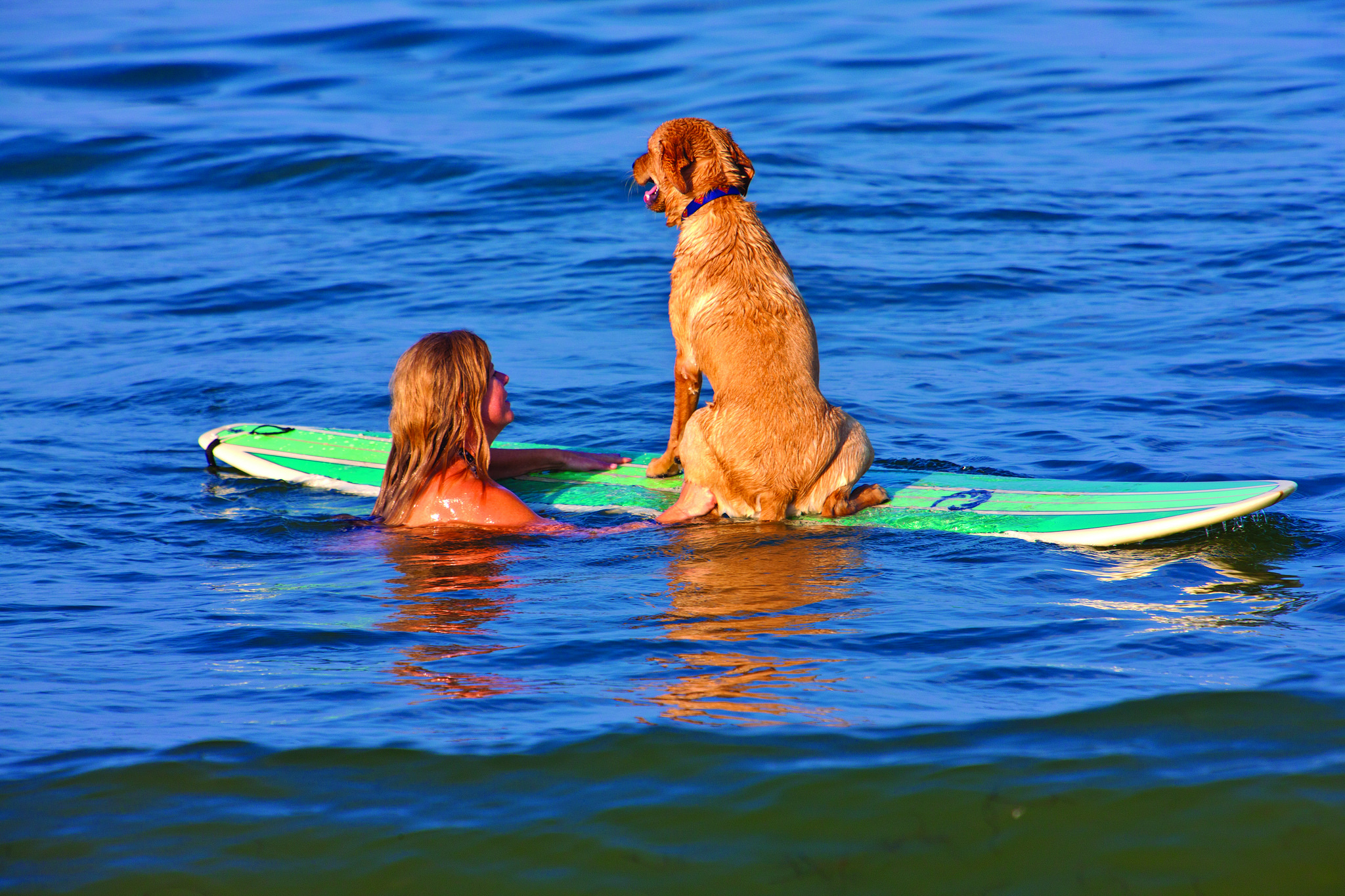Courtney Wisecarver
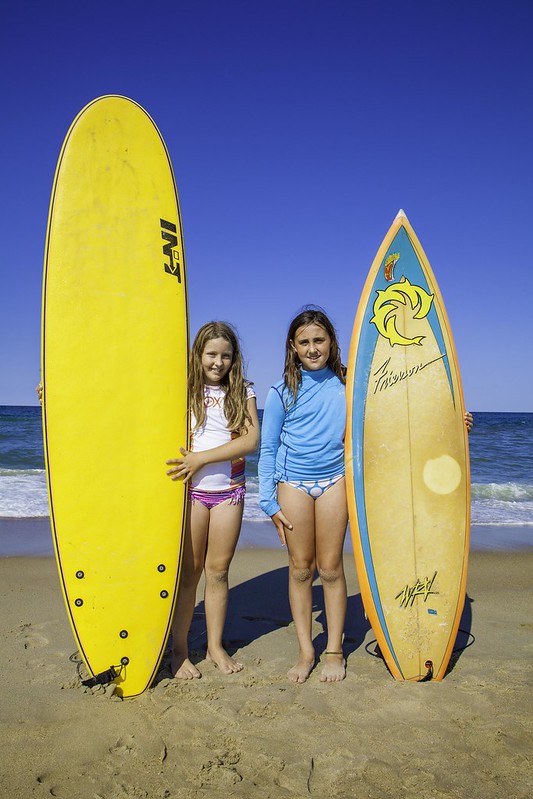
Can you go surfing in the Outer Banks?
Yes, the Outer Banks is an ideal place for surfing. With so many miles of Atlantic Ocean shoreline, there are rideable waves more days of the year than not.
Best OBX Surf Spots
The Outer Banks has a plethora of good surf spots. Some are perfect for beginners and others are suited for more skilled surfers. Be sure to observe all posted regulations about parking, beach driving, and/or surfing in each area.
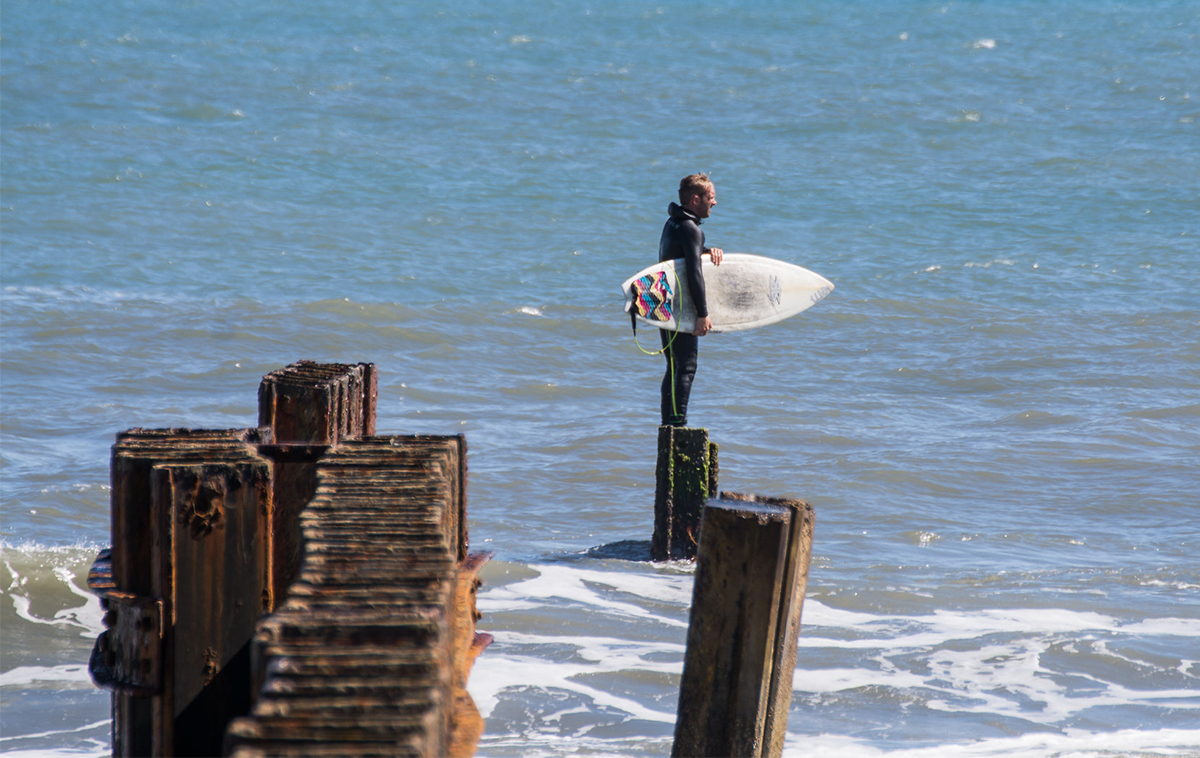
- The Point, Buxton
A well-known break among local and visiting surfers, The Point is at the former site of the Cape Hatteras Lighthouse. The lighthouse was moved approximately 1,500 feet from the seashore in 1999. The jetties constructed to protect the lighthouse in its previous location remain, providing consistently good surf.
- Irene’s Inlet, just north of Rodanthe Village
The Pea Island National Wildlife Refuge is an approximately 13-mile long stretch at the northern end of Hatteras Island. The refuge provides habitat and protection for migratory birds. There are no vacation homes, campgrounds, or businesses here, so the beaches are wide open and peaceful. Although the surf is excellent along the beach in Pea Island, the legendary surf spot Irene’s Inlet is located in this stretch of the coast. In 2011, Hurricane Irene created a half-mile breach in the landscape, where the dunes and road were washed out, and the ocean met the sound. Identified by the temporary bridge that has since been replaced with the Richard Etheridge Bridge, Irene’s Inlet instantly became a popular surf spot. Local professional surfers are no strangers to Irene’s Inlet, making this the place to go if you’d like to watch some skilled surfers in action.
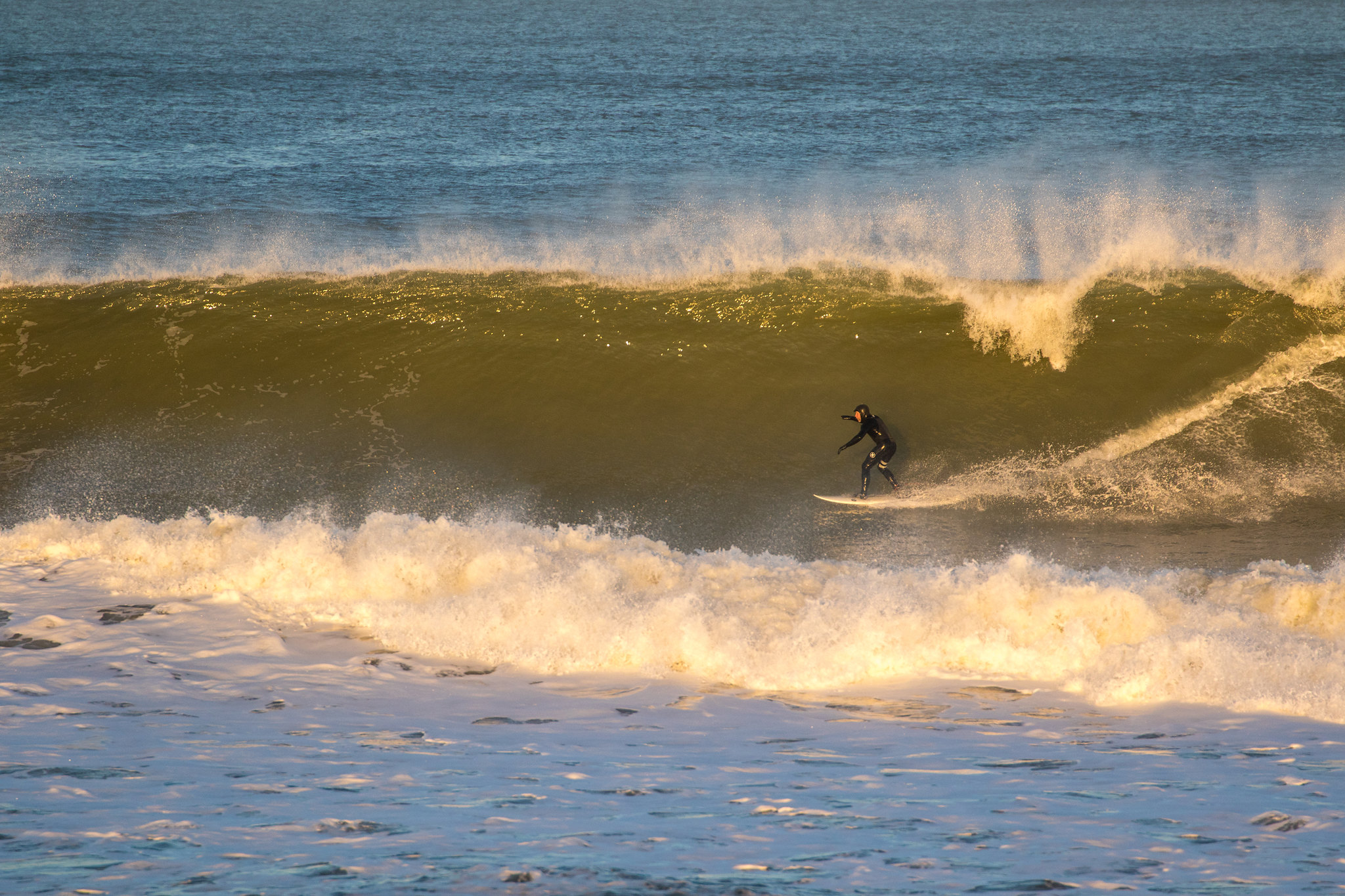
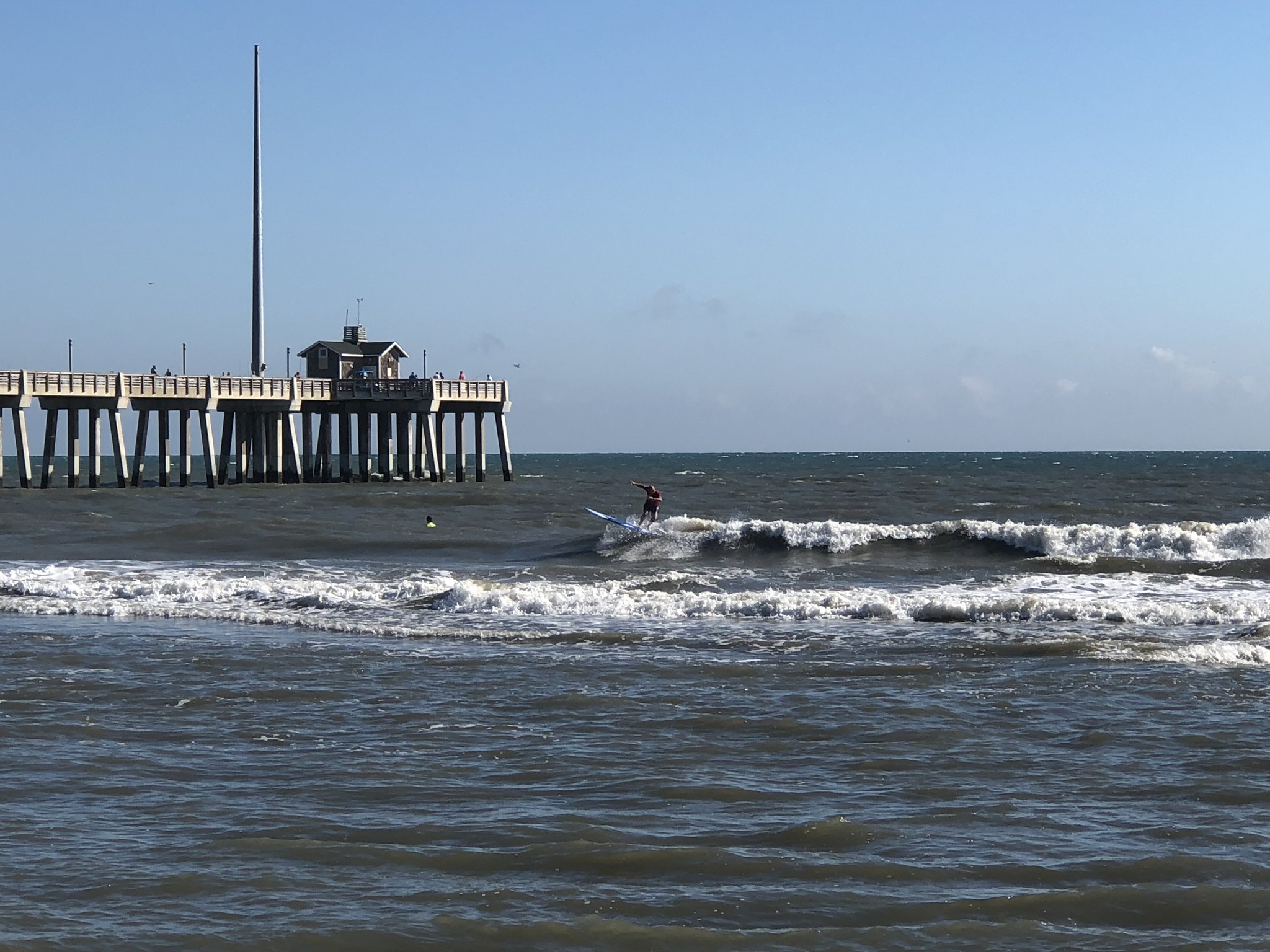
- Jennette’s Pier, Nags Head
One of the oldest surf spots on the Outer Banks, Jennette’s Pier offers convenience and amenities along with surf. The pier was destroyed during Hurricane Isabel in 2003. A concrete pier with an expansive, multi-functional pier house was constructed in its place. Before you head there, get prepared by taking a live look at the surf at Jennette’s Pier. The surf is consistent and great for beginners. Many local surf instructors choose to teach surf lessons at Jennette’s Pier. There is a large parking lot and many food and beverage choices nearby for refueling post-surf. Try to get there early for the clean surf, as it can be windy in the afternoons.
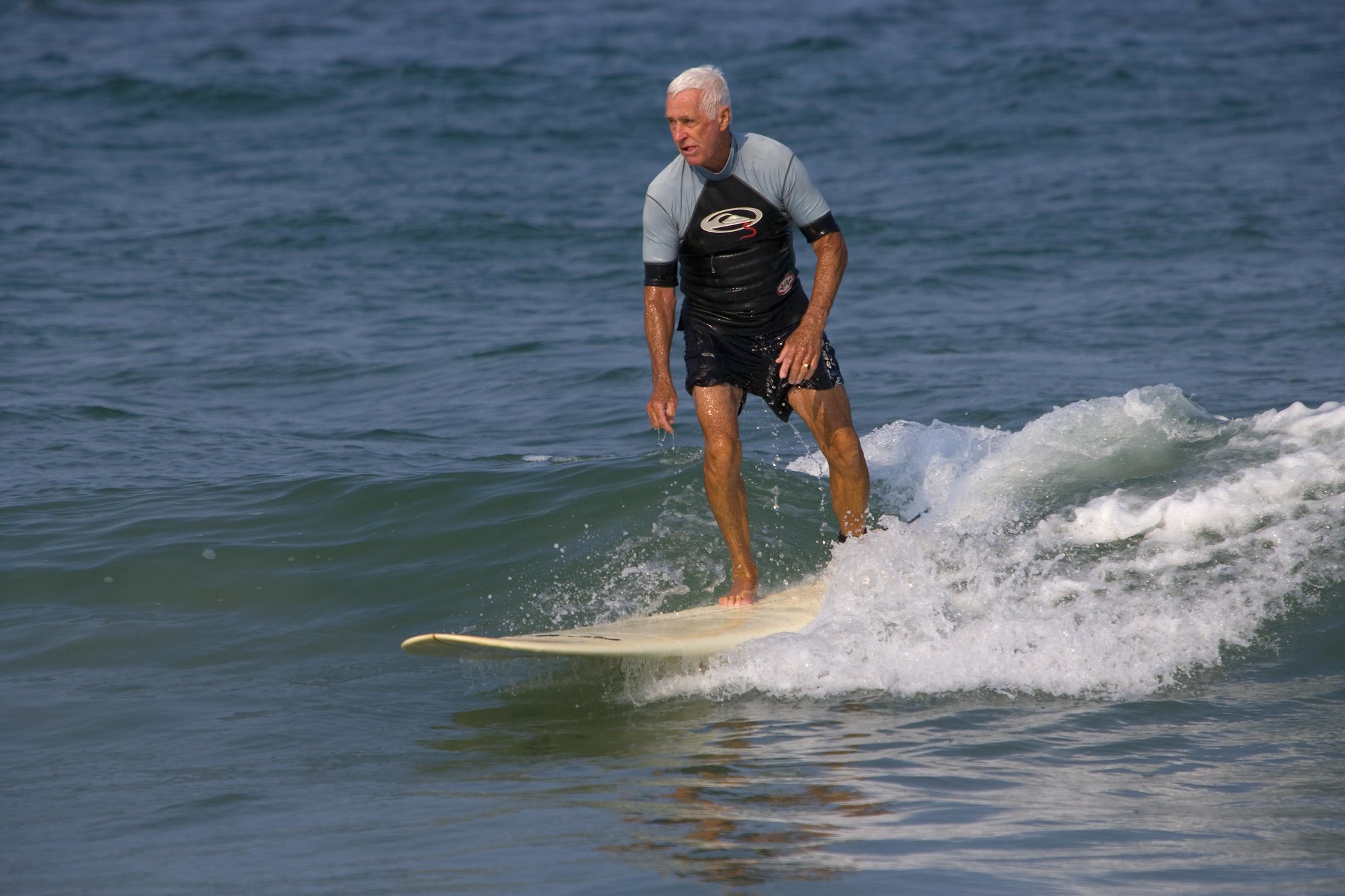
- “In Town”, Kitty Hawk, Kill Devil Hills, Nags Head
When there are waves, the surfers will definitely be out in the water in many areas of Kitty Hawk, Kill Devil Hills, and Nags Head. Lovingly referred to as “in town”, local surfers will paddle out for a session before or after work with friends and neighbors. The waves at each particular beach access will vary, as sandbars can shift when hurricanes or nor’easters move through the Outer Banks. Be sure to park at a marked beach access, not along the street or at a business.
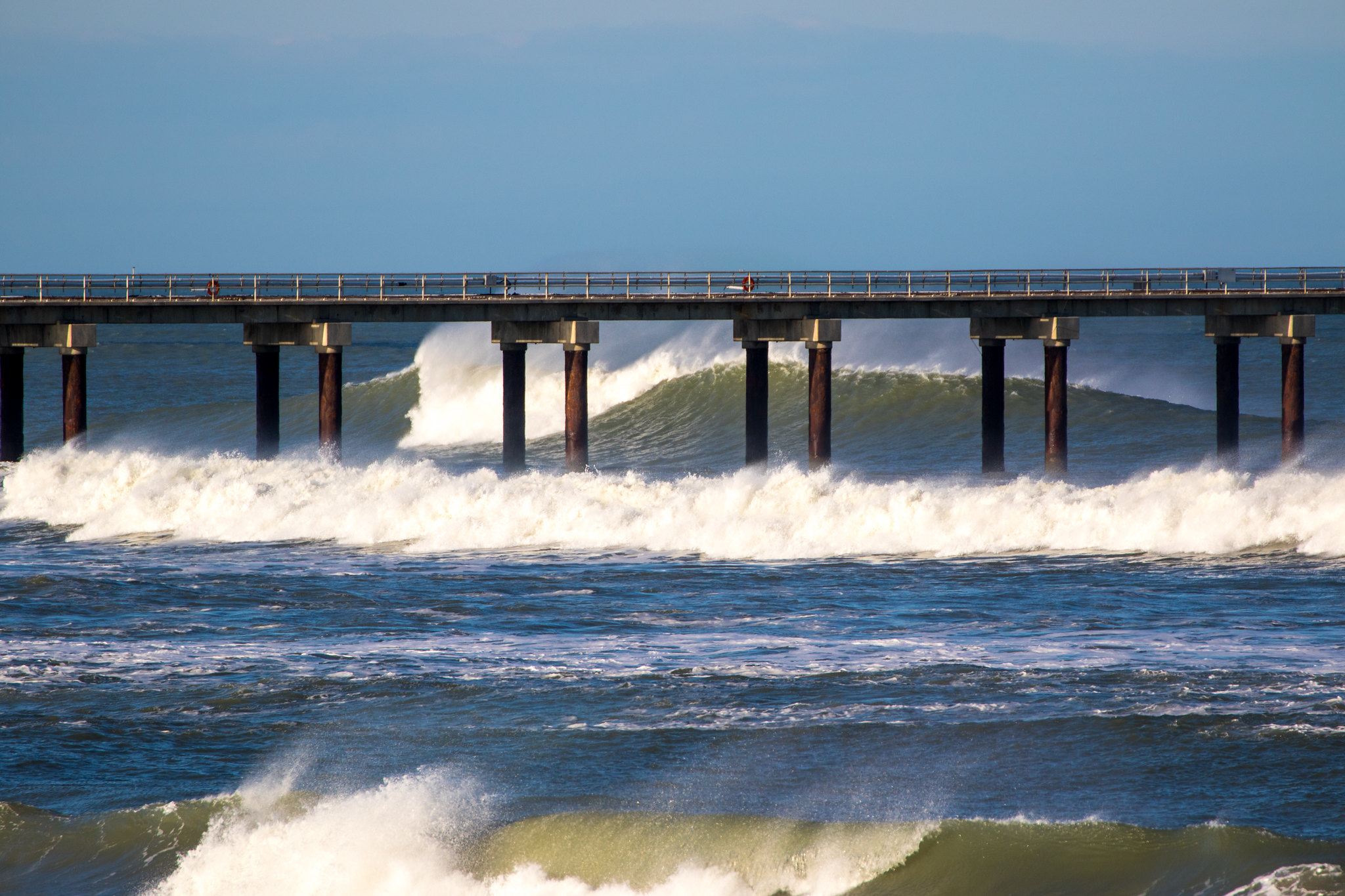
- Duck Research Pier
Like most local piers, Duck Research Pier has great surf on either side of the pier. Access is limited and requires a long hike down the beach, as there are no public beach accesses in the town of Duck. Surfers should not paddle out too close to the pier, and also use extreme caution, as sections of the water are sometimes closed for research purposes.
- Corolla and Carova
With flat beaches and gradual ocean entry, Corolla and Carova are great surfing destinations for beginners. Rolling waves can break and carry surfers all the way to the beach on an ideal day. A 4×4 vehicle is required to get to Carova, and parking passes are required to park on the beach during certain times of the year. It’s worth the effort for a fun day of surfing!
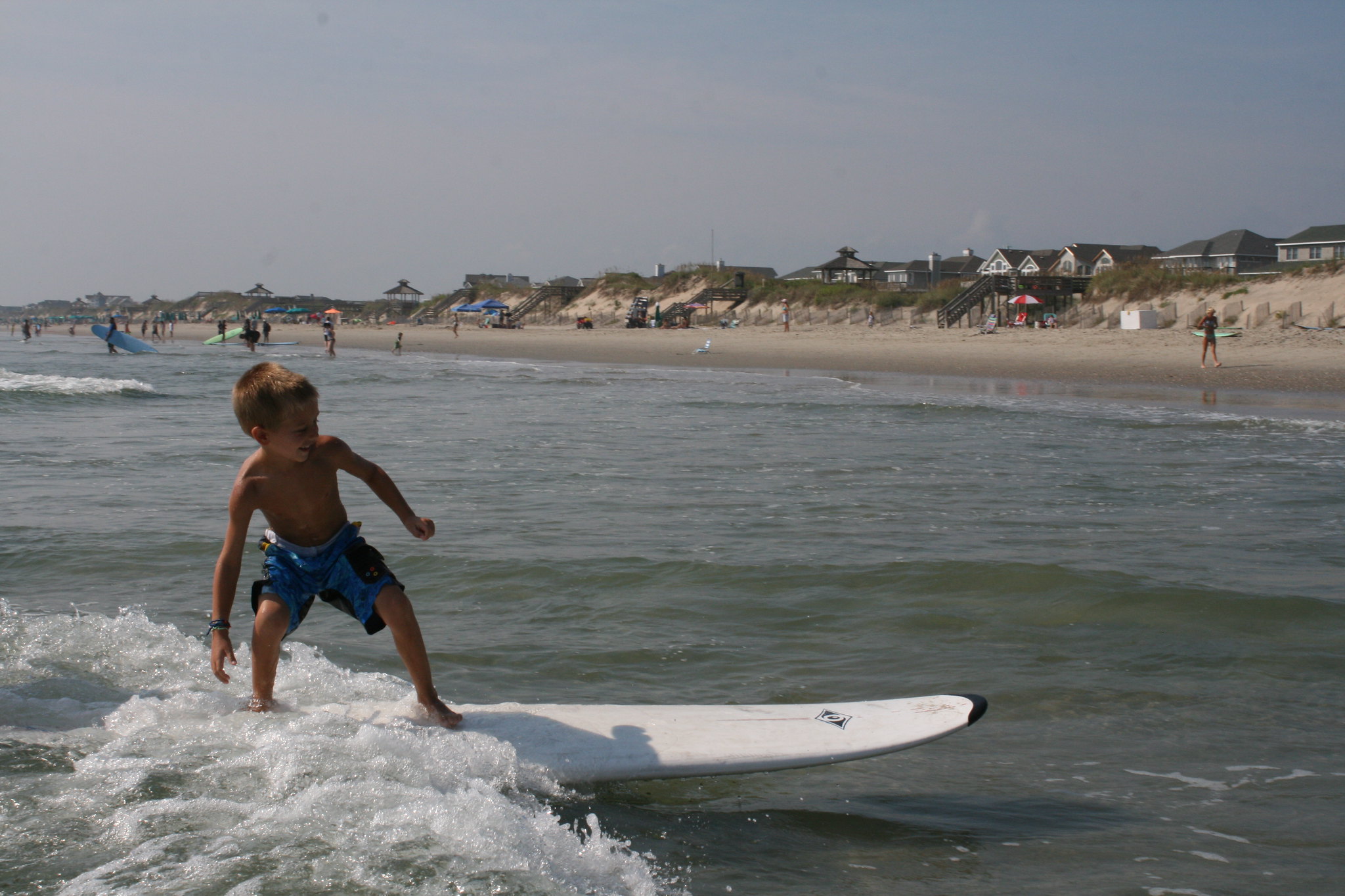
Surfing Reports & Surf Cams
Know before you go! SwellInfo can give you the basics, including the tides, ocean temperature, wind speed and direction, and predictions for the next few days. For a more comprehensive OBX surf report, check out the paid app Surfline, which gives a breakdown of surf conditions, ocean temperature, tides, and more at surf spots up and down the entire Outer Banks.
What is the ocean temperature in the Outer Banks? Jennette’s Pier also offers cameras on each side of the pier, as well as the current water surface temperature to know whether or not to bring your wetsuit.
Looking to check out the conditions yourself on an OBX surf cam? Check out Twiddy’s web cam, which is located in Kitty Hawk.
When planning your surfing session, you’ll need to know the best time to surf in North Carolina, and that is going to depend on which OBX surf spot you choose. Some breaks are better at high tide, and others are optimal at low tide. Check our OBX Tide Charts before you leave home.
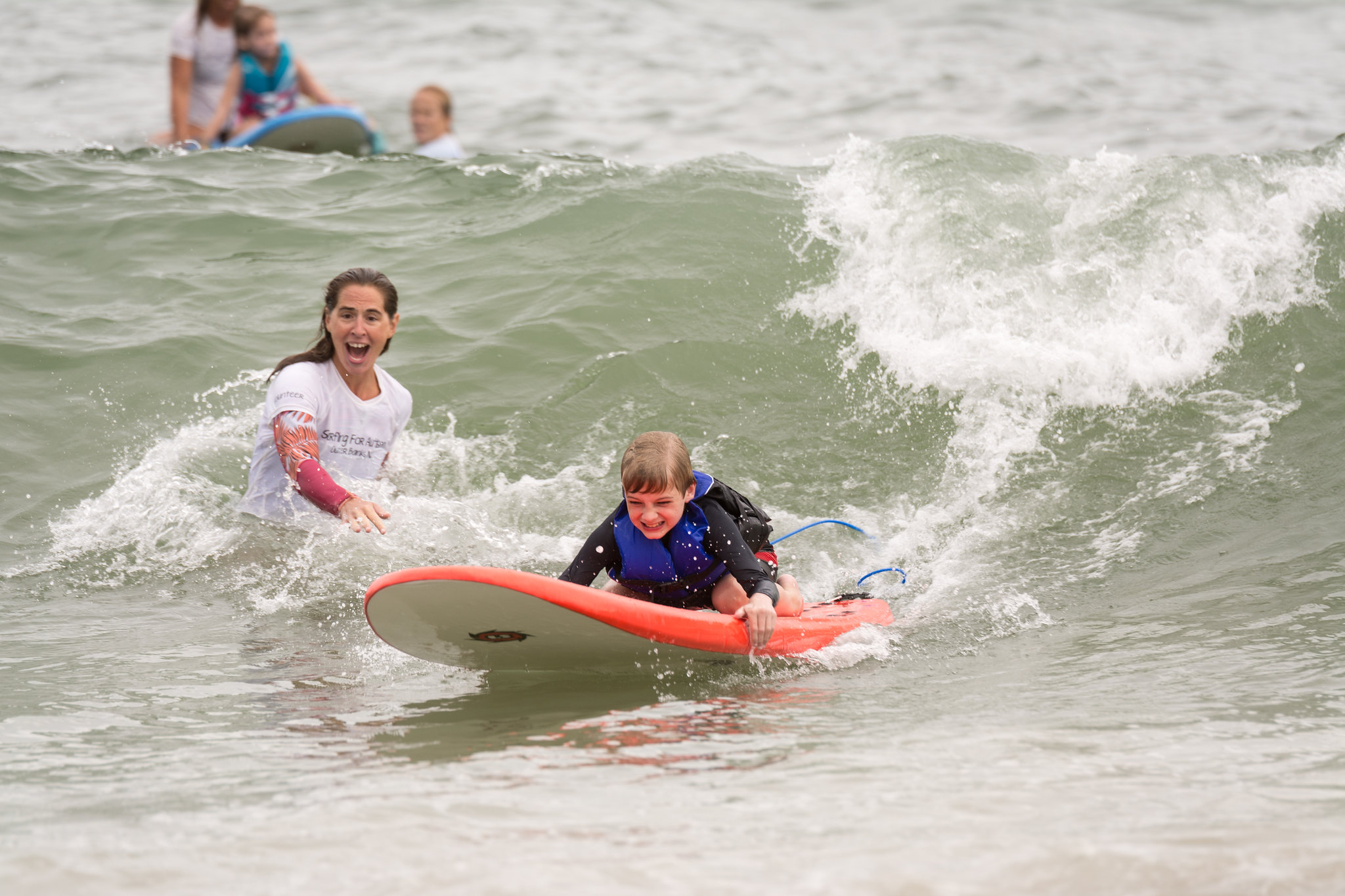
Surfing Lessons Offered in the OBX
There is a learning curve when trying to surf for the first time. An Outer Banks surfing lesson is a great way to get acquainted with surfing. Learn tips and tricks from local surfers that get great joy from sharing their love of surfing with others.
There are many choices for Outer Banks surfing lessons, but we have a few favorites.
Corolla Surf Shop
- (252) 453-9283
- info@corollasurfshop.com
Corolla Surf Shop has been teaching surfing lessons on the Outer Banks for decades. They offer several different classes, so lessons can be tailored to age and skill level.
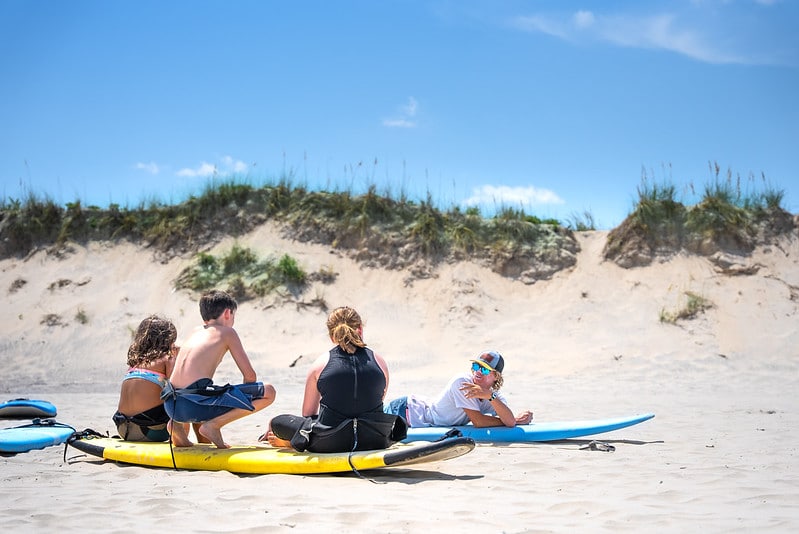
Outer Banks Surf School
- (252) 305-3774
- info@obxsurfschool.com
Founded in 2008 by a Kill Devil Hills local, different levels of surf lessons and camps are available. Choose from group lessons or private one-on-one lessons.
FAQs About Surfing in the Outer Banks
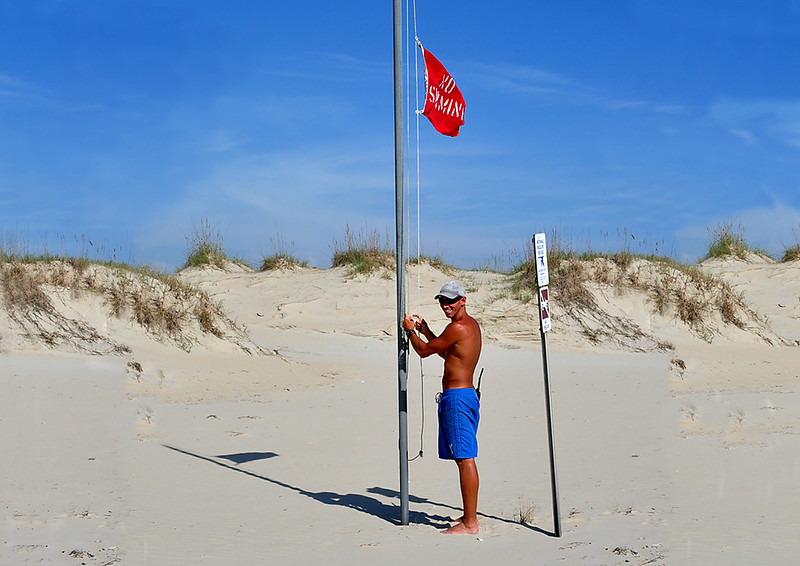
The red no swimming flags are up at the beach, but there are surfers out. Is it safe to surf?
When the red flags are up, dangerous ocean conditions are present and swimming is prohibited. Red flag regulations for surfing vary slightly in each town. As always, we recommend staying out of the water if the red flags are flying.
Can I surf by a fishing pier?
It’s no secret that there are usually surfable waves by OBX fishing piers. Surfing right beside a fishing pier is prohibited. Each pier has signs posted with the distance you must stay away from the pier when in the water, whether it is 100 yards or 300 feet. It’s best to heed the warnings – nothing ruins a vacation quite like surfing into a pier piling or getting a fish hook stuck in your foot.
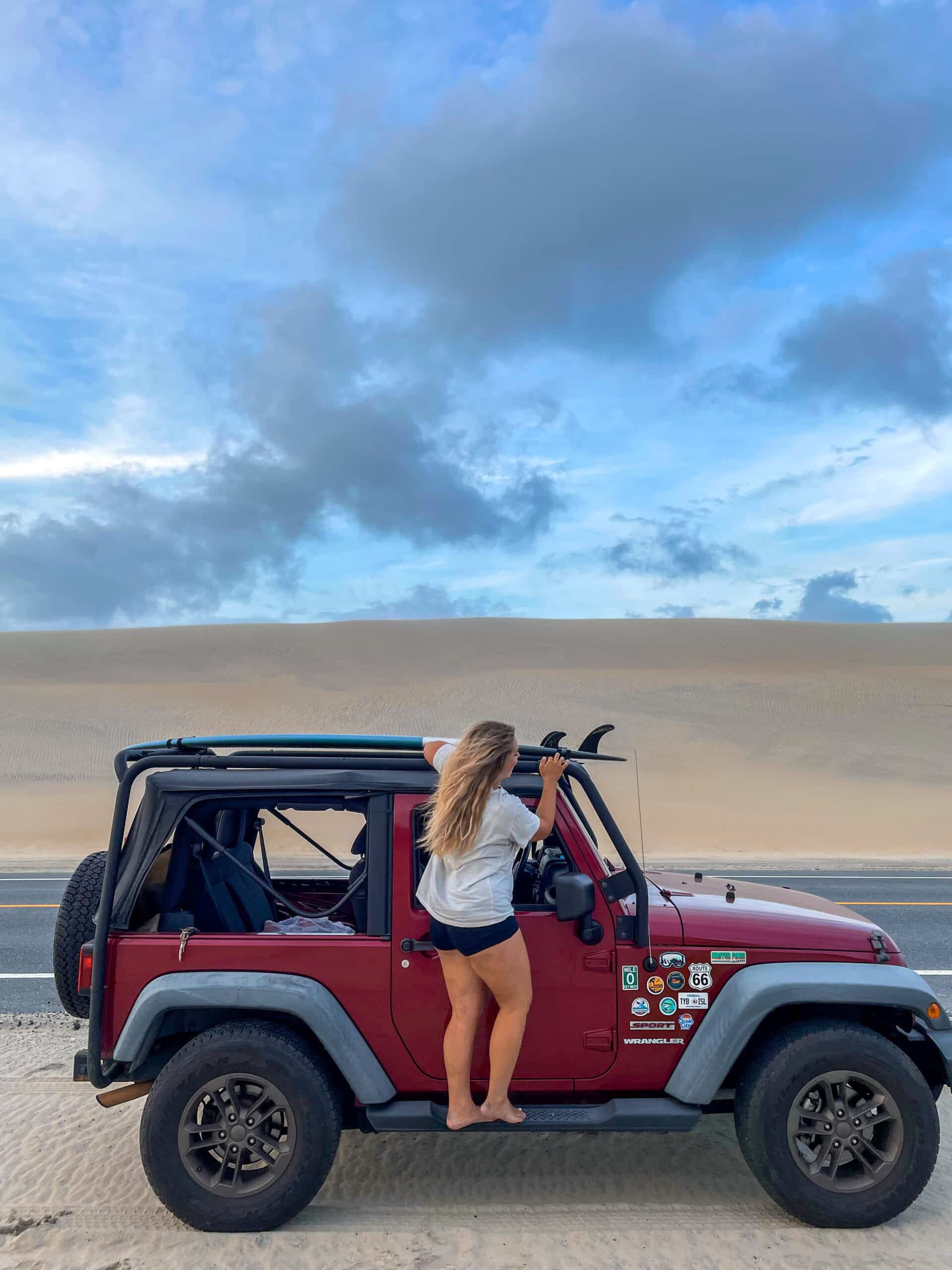
Where do I park to reach the spot I’d like to surf?
Nothing’s worse than coming back from an epic surf sesh to find that your car’s been towed. Be sure to observe any and all parking regulations at the surf spot you’ve chosen. Parking along NC-12 is permitted at spots down south, like s-turns, however, parking along NC-12 is strictly prohibited in town and in Duck and Corolla. It’s best to find a designated beach access to park your vehicle.
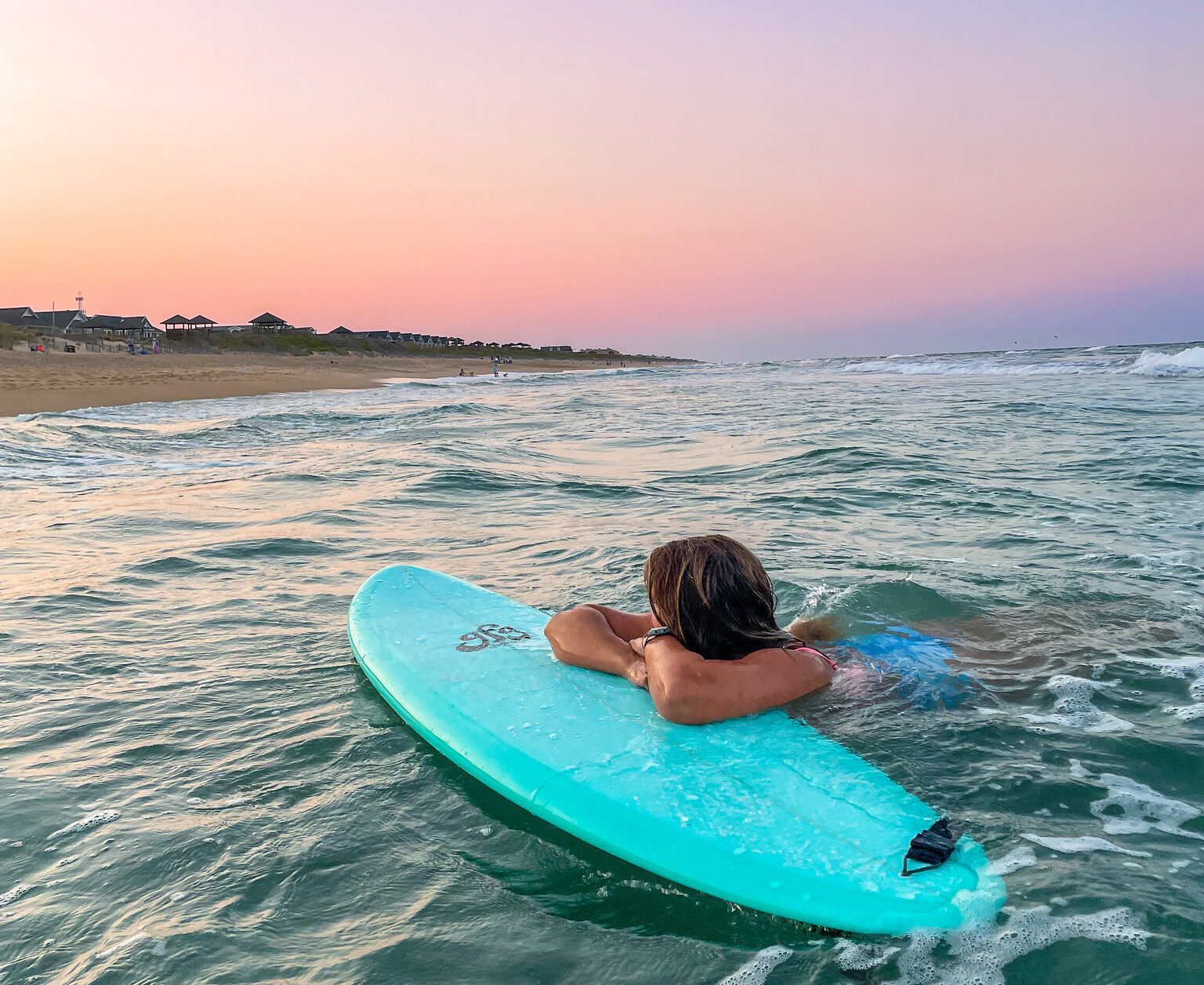
What is the water temperature in the Outer Banks?
The ocean temperature varies and can change within a few hours if the wind direction switches. Just because it’s July and 90 degrees out doesn’t mean that the ocean temperature will be comfortable!
On average, OBX ocean temperatures are generally at their highest in July, at around 80 degrees. Outer Banks ocean temperatures are around their lowest at the beginning of March, when they are in the mid-50s range.
Do I need to wear a wetsuit?
Check the water temp in the Outer Banks before you get to the beach. When the water is around 65 degrees or cooler, you may choose to wear a wetsuit for comfort. If you don’t have your own wetsuit, many surf shops rent them out.
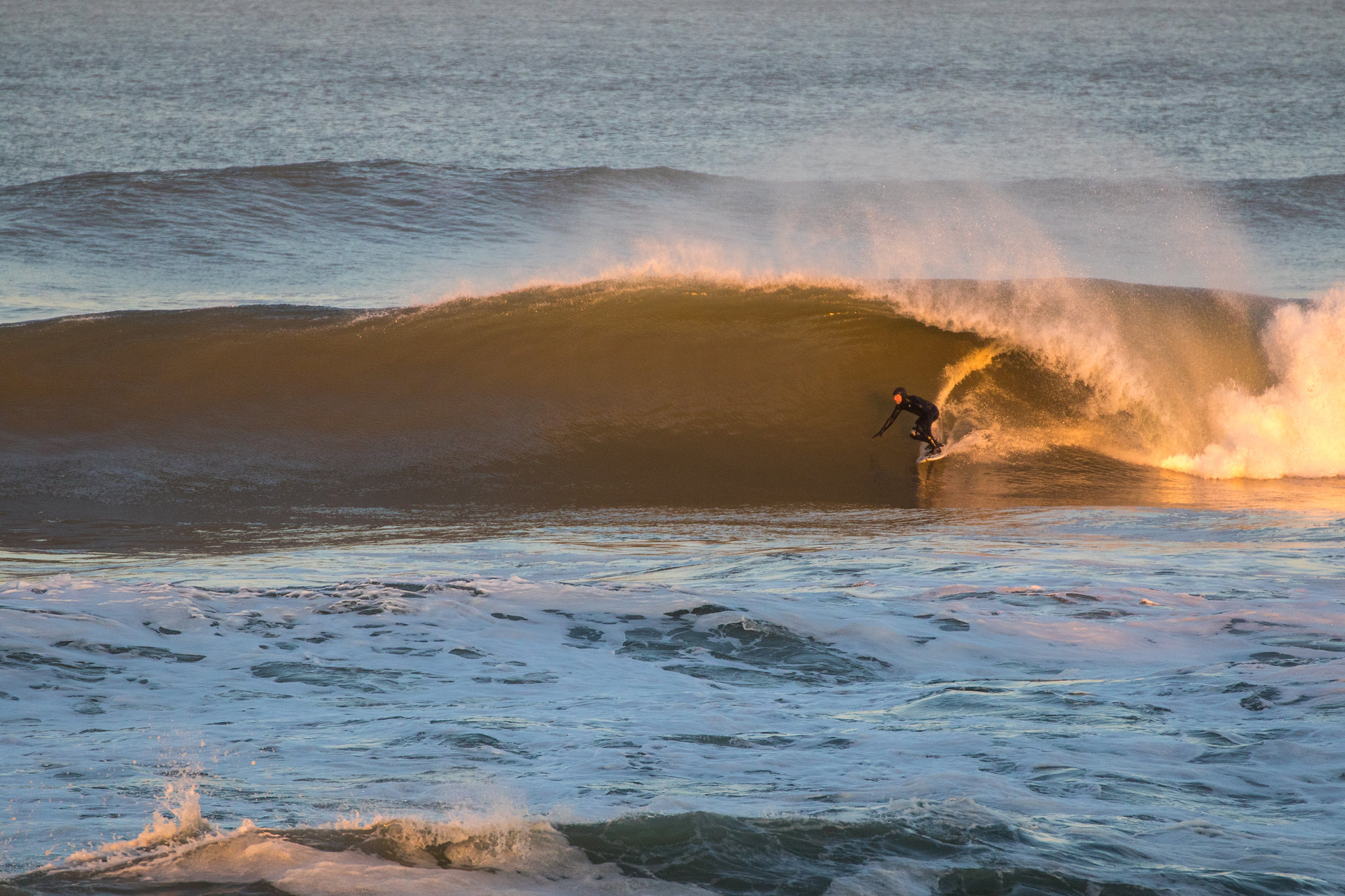
What is the best time to surf in the Outer Banks?
It’s no secret that we love Fall on the Outer Banks. The surf in the Fall can vary from small to huge, depending on the presence of storms in the Atlantic Ocean. In general, the ocean temperature is still warm and the crowds are few.
